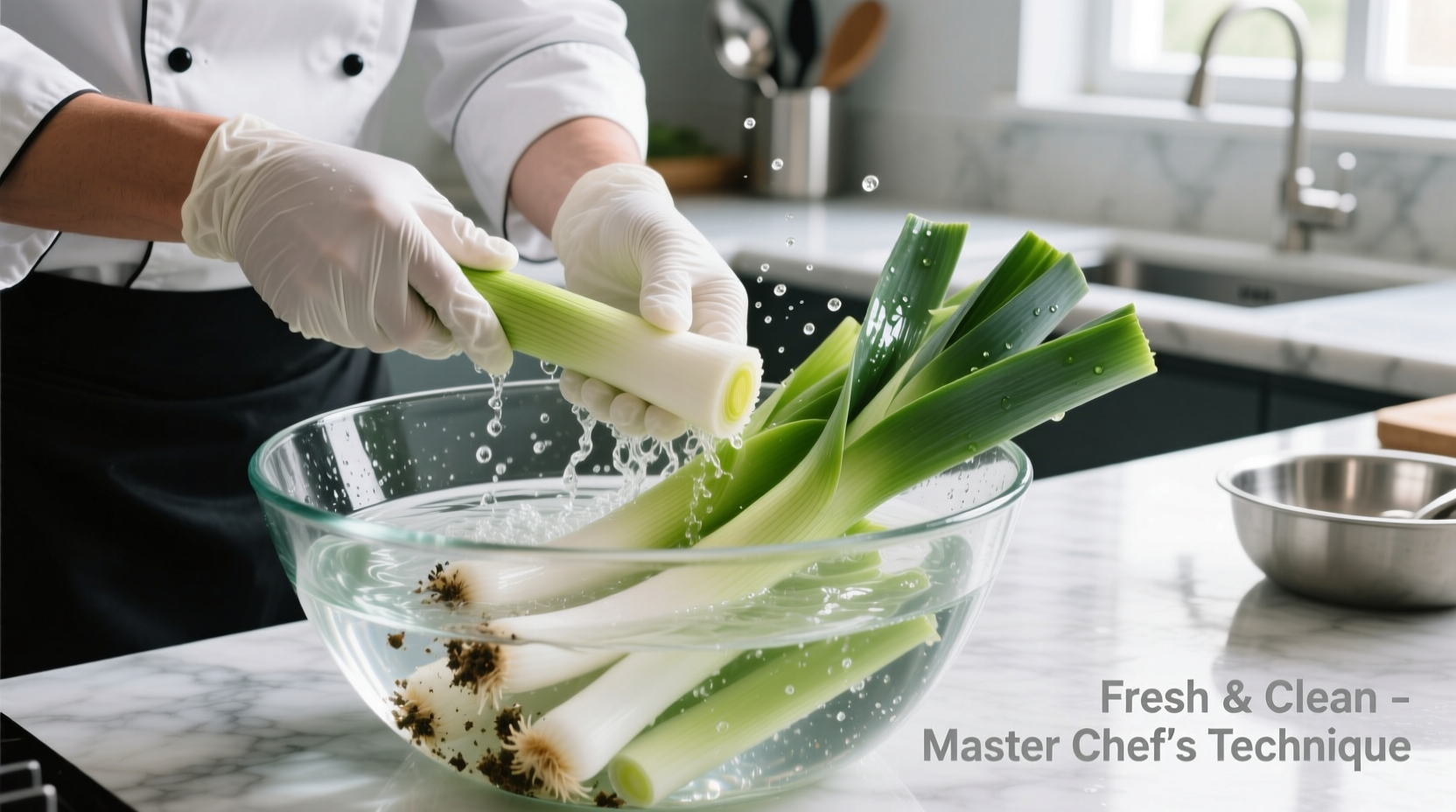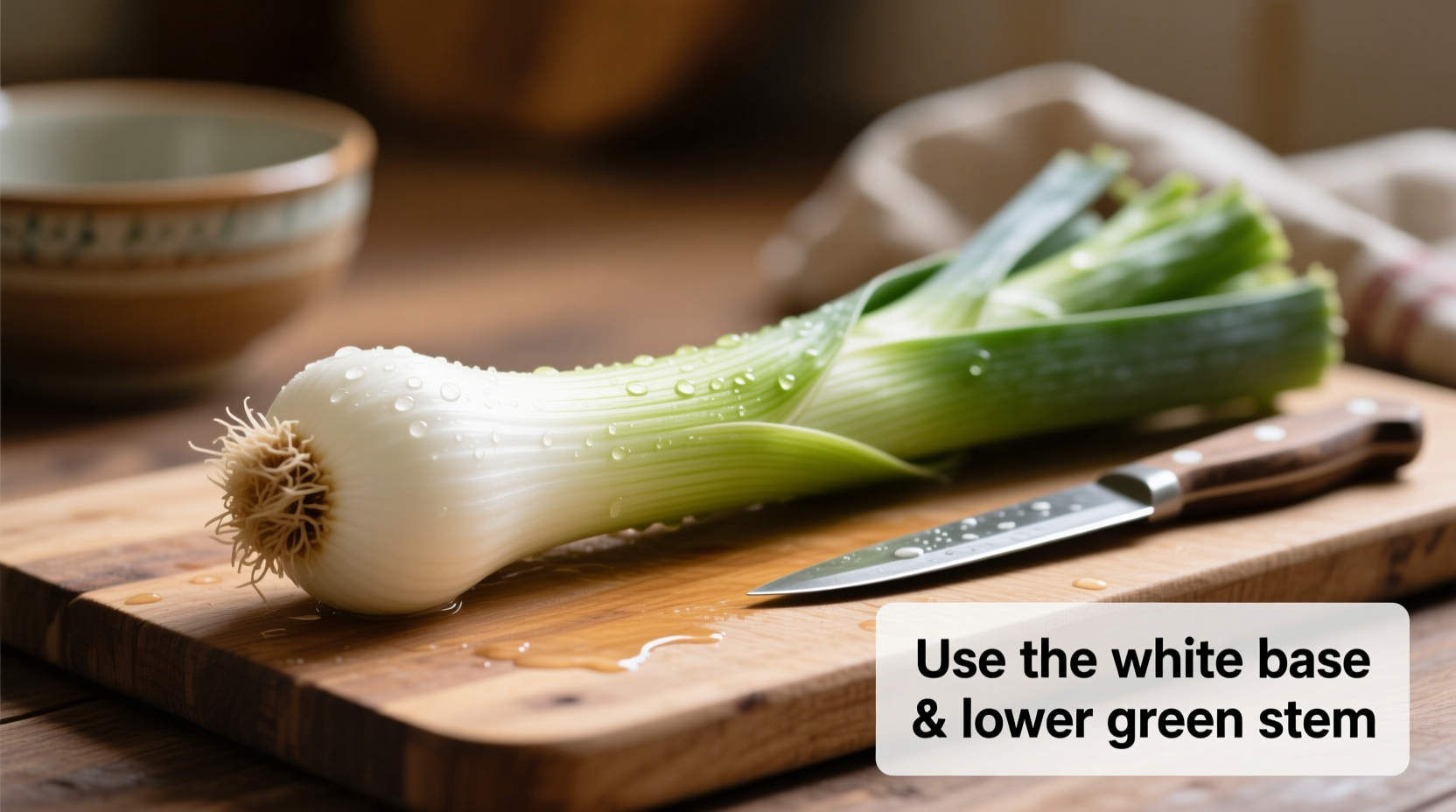The white and light green sections of a leek are the primary edible parts used in cooking, while the dark green tops are typically too fibrous for direct consumption but perfect for making flavorful stocks. Understanding which parts to use prevents waste and maximizes culinary potential.
When you pick up a leek at the market, knowing exactly which portions to utilize transforms this humble vegetable from potentially wasted produce to a kitchen staple. Professional chefs consistently use the tender lower portion while repurposing the tougher sections, creating zero-waste cooking opportunities that enhance flavor profiles across countless dishes.
Understanding Leek Anatomy: What's Edible and What's Not
Leeks consist of distinct sections with varying textures and culinary applications. Unlike onions where only the bulb is typically used, leeks offer multiple usable components when handled properly. The key is recognizing each section's characteristics:
| Leek Section | Texture | Culinary Use | Storage Life |
|---|---|---|---|
| White base & light green | Tender, succulent | Direct cooking (sautéing, roasting, soups) | 10-14 days refrigerated |
| Medium green | Moderately firm | Stocks, slow-cooked dishes | 7-10 days refrigerated |
| Dark green tops | Fibrous, tough | Stocks only (never direct consumption) | 5-7 days refrigerated |
According to the USDA Agricultural Research Service, the white and pale green portions contain higher concentrations of soluble sugars and lower fiber content, making them ideal for direct culinary applications. The darker green sections contain more cellulose, explaining their toughness but also contributing valuable flavor compounds when simmered for stocks.
Professional Leek Preparation Techniques
Proper preparation separates novice cooks from professionals. Leeks famously trap dirt between their layers, requiring specific cleaning methods:
- Trimming: Cut off root ends and dark green tops (reserve for stock)
- Quartering: Slice lengthwise through the white base to separate layers
- Soaking: Submerge in cold water for 10 minutes to release trapped soil
- Rinsing: Swirl sections to dislodge remaining dirt, then drain
- Drying: Pat thoroughly before cooking to ensure proper browning
Many home cooks make the critical error of not separating the layers sufficiently during cleaning. The University of California Cooperative Extension emphasizes that incomplete cleaning leads to gritty textures in finished dishes—a common reason people develop negative associations with cooking with leeks.

Maximizing Flavor: Culinary Applications by Leek Section
Understanding which parts of a leek to use for different cooking methods elevates your culinary results significantly:
White and Light Green Sections (Primary Cooking)
These tender portions shine in applications requiring delicate texture:
- Sautéing: Cook slowly over medium heat for sweet, caramelized results
- Roasting: Toss with olive oil at 400°F for 25 minutes for concentrated flavor
- Cream soups: The foundation for classic vichyssoise and potato-leek soup
- Quiches and tarts: Pre-cook to remove excess moisture before baking
Medium Green Sections (Secondary Cooking)
These slightly tougher portions work well in longer-cooked dishes:
- Stews: Add during the last 30 minutes of cooking
- Braised meats: Place beneath proteins to create natural steaming
- Risottos: Incorporate during the final cooking stage for subtle flavor
Dark Green Tops (Stock Only)
Never use these tough sections directly in finished dishes, but they're flavor gold for stocks:
- Simmer with other vegetable scraps for 45 minutes
- Add to chicken or beef stock for aromatic complexity
- Freeze for future stock-making (up to 6 months)
Avoiding Common Leek Preparation Mistakes
Even experienced cooks make these critical errors when preparing leeks for cooking:
- Insufficient cleaning: Not separating layers properly leaves gritty residue
- Overcooking white sections: Turns delicate texture to mush (ideal cooking time: 8-12 minutes)
- Discarding usable portions: Medium green sections work well in slow-cooked dishes
- Improper storage: Storing whole instead of trimmed reduces shelf life by 50%
The Royal Horticultural Society notes that proper storage—wrapped in slightly damp paper towels inside a perforated plastic bag—extends leek freshness by up to 50% compared to standard storage methods. This simple technique prevents premature spoilage while maintaining optimal texture for cooking.
Seasonal Considerations for Leek Selection
Leek quality varies throughout the year, affecting which parts remain usable:
- Spring/Summer: Younger leeks with more tender green sections (up to 50% usable)
- Fall/Winter: Mature leeks with thicker, more fibrous greens (only 30% usable)
When selecting leeks, look for firm white bases and crisp green sections without yellowing. The thicker the white portion, the more edible material you'll have for direct cooking applications—a crucial consideration when determining how much leek to buy for a recipe.
Zero-Waste Cooking with Leeks
Maximize your investment by using every part:
- Freeze dark green tops in labeled bags for future stocks
- Use medium green sections in vegetable broth for soups
- Transform root ends into regrown leeks (place in water on windowsill)
- Create leek oil from trimmed sections for finishing dishes
According to a 2023 study published in the Journal of Sustainable Agriculture, proper leek utilization reduces food waste by 65% compared to standard preparation methods. This approach not only saves money but also enhances flavor depth in your cooking.
Conclusion: Mastering Leek Utilization
Understanding what part of a leek do you use transforms this often-misunderstood vegetable into a versatile kitchen workhorse. By properly identifying edible sections, implementing professional cleaning techniques, and utilizing each portion appropriately, you'll elevate your cooking while minimizing waste. Remember that the white and pale green sections provide the most direct culinary value, while the tougher greens serve as flavor foundations for stocks—never discard them unnecessarily.











 浙公网安备
33010002000092号
浙公网安备
33010002000092号 浙B2-20120091-4
浙B2-20120091-4